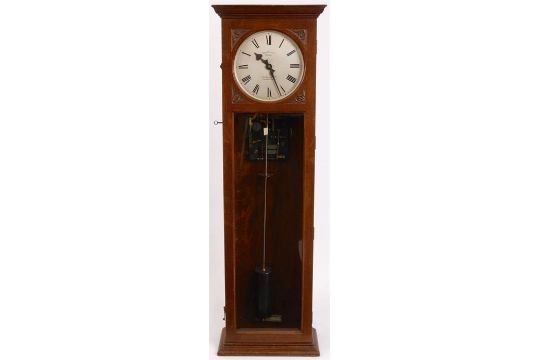Synchronome Master Clock Serial Numbers
03.08.2019by admin
Multiple Secondary or Slaves or two dial Slave Clocks Model 1900W-UNV Master-Slave. High voltage unit provides proper signal to wind clock. Connect directly to coil, bypassing contacts and therefore avoiding effects from burned out contacts (particularly notable with the 110 volt units). Coils are usually marked if unit is 110 volts. Recommended Battery.
THIS LISTING IS FOR BOOKS TO BE DELIVERED IN THE UK ONLY. FOR COUNTRIES OUTSIDE THE UK, THERE MAY BE SEPARATE LISTINGS. In the meantime it is very easy to purchase the books for international delivery by visiting /synchronome/
Master Clock System
The AHS is delighted to announce its publication of Bob Miles’s long-awaited book on Synchronome. After more than fifteen years in the research and writing, this gargantuan project is finally published and available. The book runs to 288 pages with more than 300 illustrations, mostly in colour, including pictures of rare examples of both clocks and ancillary equipment, as well as enhanced versions of original line drawings and extracts from original catalogues. Serial number and dating charts are provided. Reviews of the book have been universally positive: 'This book, on a highly innovative company run by individuals of character, is a major contribution to the history of electrical timekeeping and its influence on modern culture.' John Griffiths FBHI, Horological Journal , September 2011. 'The book is beautifully presented and stylishly set out [...] the production is of a high standard and in view of the years of research that have gone into it and the amount of information published for the first time, the price is certainly very reasonable.' Derek Bird, Antiquarian Horology , September 2011. 'It contains much new information about Synchronome [...] it is well written and well illustrated and accessible even to the beginner. If you are interested in electrical horology it is a must.' John Hunter, Clocks , September 2011. 'De liefhebbers van elektrische klokken in het algemeen en de bezitters van een Synchronome-klok in het bijzonder zullen ingenomen zijn met het zojuist verschenen boek 'Synchronome' van de Engelsman Bob Miles [...] De uitvoering van het boek is schitterend; ingebonden, linnen brand, fraai papier, veel duidelijke fotos en diagrammen.' Dr Hans Vrolijk, TIJDschrift , September 2011. 'L’auteur et tous ceux qui l’ont aidé ont fait untravail de recherche long et considérable, si bien que ce livre resteralongtemps, peut-être toujours, la reference incontournable pur cette horloge.' Michel Viredaz, Chronometrophilia , Winter 2011. 'This book is a 'must buy' for anyone with a serious interest in precision horology, electrical horology, or time systems.' Fortunat Mueller-Maerki, NAWCC Bulletin , January/February 2012. OVERVIEW To give you a flavour of what to expect, here are some important features: Size: quarto book size (pages are 305mm x 241mm)Binding:
thread sewn hardback book, with fine quality cloth cover and full gloss dust jacketPaper:
150gsm silk art paperPages:
288 pages (120,000+ words) Illustrations: more than 300 illustrations, mostly in colour, many bespoke for the bookCHAPTER PLAN
Chapter 1 charts the lives of all the key characters of the story (Frank and Robert Hope-Jones, George Bennett Bowell, William Hamilton Shortt and a variety of key employees). It covers the early history of the firm from the 1890s, through troubled times and world wars, involving the triumphs of precision timekeeping, factory expansion, the diversification of products, all the way through to the firm’s eventual demise, illustrated throughout with pictures of the key figures and places. It also places Synchronome in context with the clocks of Hipp, Campiche, Gents and their Pulsynetic clocks, and those of Magneta, Silent Electric, Murday, Gillett and Johnston, ECS and many more. Chapters 2 to 5 chart the development of the Synchronome master clock through all its forms, variants and uses, profusely illustrated, with details of rare and unusual models. The chapters are divided as follows: 2 – The Years of Pioneering 1894–1905; 3 – The Years of Development 1905–1918; 4 – The Years of Achievement 1918–1960; and 5 – The Final Years 1960–1980. Chapters 6 and 7 deal in detail with the slave clock, its form and design... read more
read more